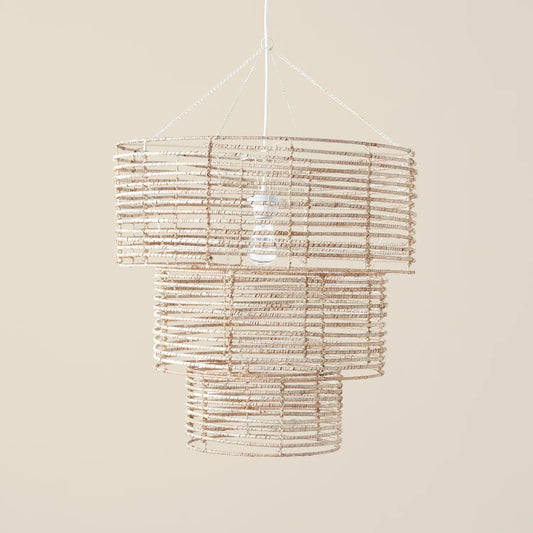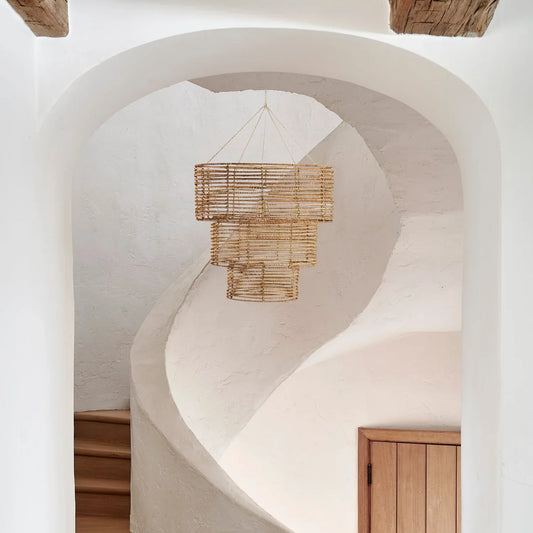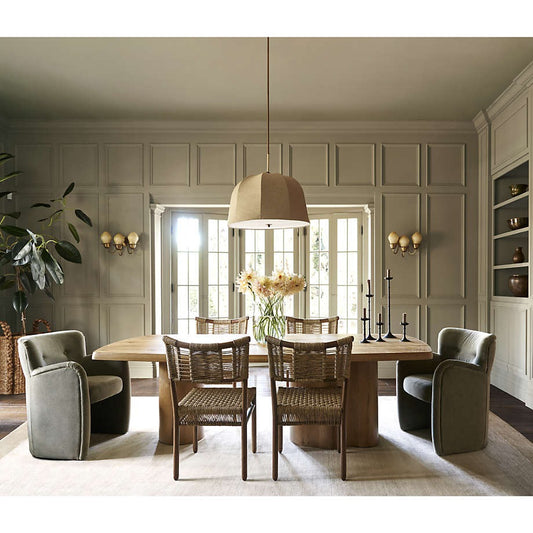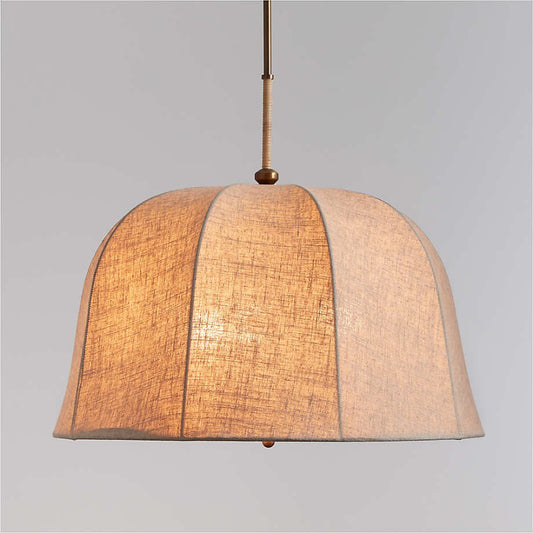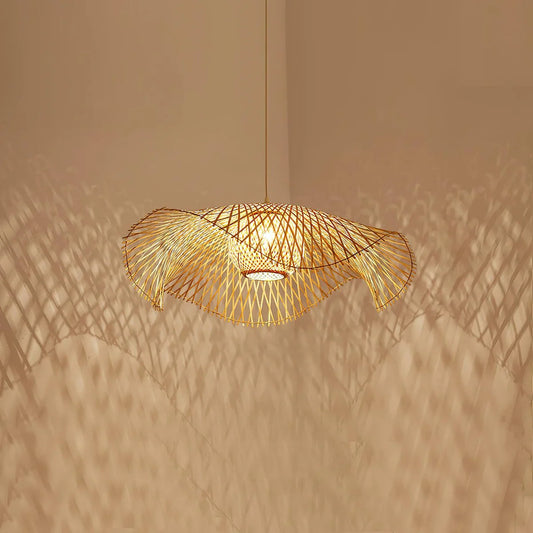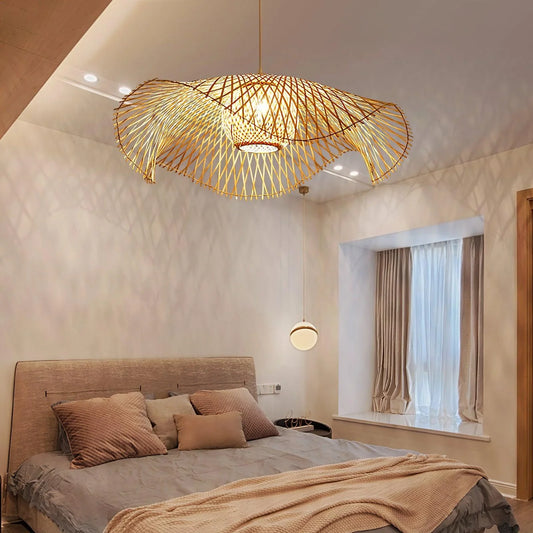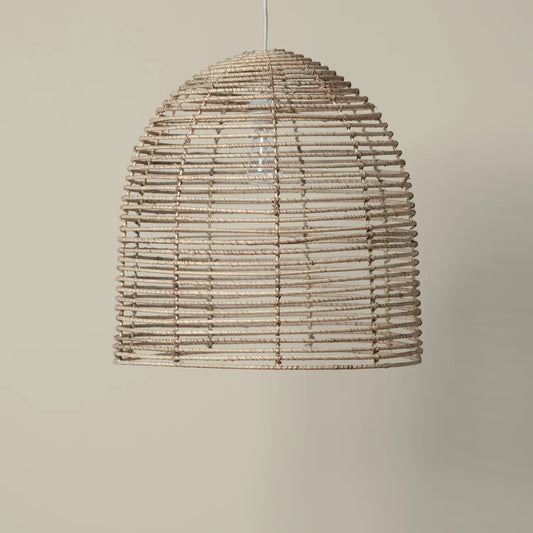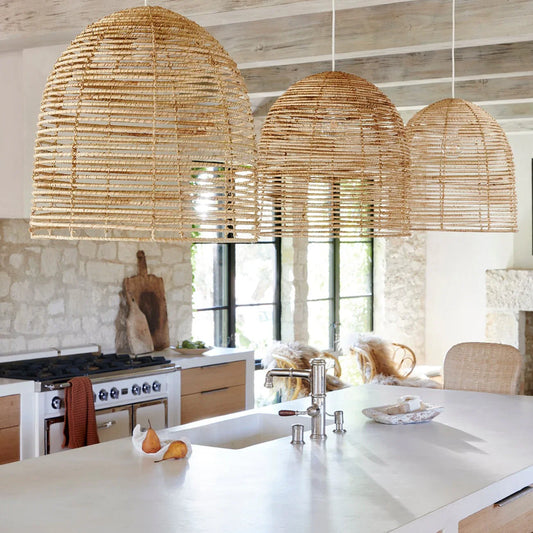How High to Hang Light Over Dining Table for Perfect
hello rowabiLighting is everything when it comes to setting the mood in your dining area. But here’s a detail that often gets missed: the height of the light fixture above your dining table. Hang it too high, and you lose that cozy, intimate vibe; too low, and it disrupts the flow and feels unbalanced.
In this guide, KLOE Lighting would dive into the details of hanging your dining room lights at the perfect height. We’ll break down everything from ceiling height to fixture style, so you can transform your dining area into a beautifully lit, inviting space that’s a joy to gather around.
Key takeaways
- The optimal height for hanging light fixtures above dining tables generally falls between 30 to 36 inches for standard ceilings.
- Ceiling height should impact fixture height; adjust about 3-4 inches for every foot above 8 feet.
- The scale of the fixture should be proportional to the table size 50%-75% of the table width for chandeliers.
- Consider room style and the intended ambiance when opting for a fixture type.
- Perform tests using temporary hanging methods for optimal placement.
How far above a table should a light hang?
General guidelines recommend hanging lights approximately 30 to 36 inches above a standard 8-foot ceiling. For higher ceilings, the recommended height increases by about 3 to 4 inches for each additional foot.
Here's a simple overview of suggested heights depending on ceiling height:
| Ceiling height | Fixture height above table |
| 8 feet | 30 - 36 inches |
| 9 feet | 33 - 39 inches |
| 10 feet | 36 - 42 inches |
| 11 feet | 39 - 45 inches |
| 12 feet | 42 - 48 inches |
When hung too low, it can obstruct sightlines, making it difficult to comfortably converse with others across the table. Hanging it too high, on the other hand, can leave the table under-lit, reducing the lighting’s effectiveness and making the room feel less inviting.

The height of your fixture can significantly impact the feel of the dining area. Source: Homes & Gardens (1)
Personal style and the size of the fixture also come into play. Larger, more decorative chandeliers or statement lights might look best hung slightly higher, drawing the eye upward without overwhelming the table.
Minimalist or compact fixtures, however, can be hung a bit lower, creating a cozy, intimate vibe that complements the room’s design. As you decide, aim to strike a balance between functionality and aesthetics—ensuring your light fixture enhances both the look and feel of the dining area for a truly welcoming space.
Take ceiling height into account
Your home’s ceiling height greatly influences how high to hang lighting fixtures. Each incremental increase in height should correspond to a slight elevation in fixture placement. The idea is grounded in ensuring that the dining space feels spacious yet well-lit. For an 8-foot ceiling, the distance between the table and the light fixture should ideally remain between 30 to 36 inches.
As you adjust for taller ceilings, here is how the height increments break down:
- For each additional foot of ceiling height, increase the fixture’s height by 3 to 4 inches.
- Nine-foot ceilings: The recommended distance is about 33 to 39 inches.
- Ten-foot ceilings: Consider hanging light fixtures 36 to 42 inches above the dining table.
This gradual adjustment prevents lights from "floating" too high and keeps the dining environment feeling intimate. It’s akin to the way a picture frame complements the art within it too high and it loses its connection to the viewer's experience.

Ceiling height significantly impacts both the choice of light fixture and its placement. Source: Lighthouse Lane (2)
When dealing with vaulted ceilings, multi-tiered chandeliers or pendant clusters can be effective. They draw the eye upward while still imparting adequate illumination on the dining table below. High ceilings can create a dramatic effect, allowing for larger light fixtures, which enhances both ambiance and style.
Consider scale
To choose the ideal light fixture for your dining room, start by determining your ceiling height. Once that’s set, the next step is to focus on the scale of the light fixture in relation to your dining table and room size. A light that is too large can overshadow the dining area, while a minuscule option can easily get lost amidst a larger room setting.
Here’s a breakdown of how to achieve the ideal scale:
- The diameter of chandeliers should generally be 50% to 75% of the table's width. This ensures that the light does not dominate but rather complements the table size.
- For rectangular tables, linear suspension lights or rows of pendants spaced evenly can provide even lighting.
- If you have a round table, a single, centered fixture often works best.
Think of your dining space as a canvas. The light fixture is not just a source of illumination; it should enhance your aesthetic portrayal of the room. This multifaceted approach creates a dining atmosphere that is both inviting and marvelously stylish.
What type of light is best above a dining table?
In conjunction with scale, the type of light fixture you choose also plays a pivotal role in establishing the mood and functionality of your dining area. Chandeliers, pendants, and linear suspensions are all popular options, each bringing unique attributes to the table.
- Chandeliers: They often create a centerpiece effect and can vary widely in design, making them perfect for both formal and casual dining. When considering a chandelier, aim for a size that is proportional to the table and the room.
- Pendant lights: These fixtures come in various sizes and styles, providing versatile solutions for smaller spaces. For a group of small pendants, consider spacing them evenly across the table to create visual continuity.
- Linear suspension lights: Ideal for longer, rectangular tables, these fixtures deliver uniform light coverage across the dining surface, enhancing function and style.
Before finalizing your decision, consider how the scale and design of the light fixture will harmonize with the table and room decor. A linear light may excel in a modern decor, while an ornate chandelier could enhance a classic setting.

Each type of light fixture is suited to different styles and functions. Source: Froy.com (3)
Factors to consider
When choosing a light fixture for above your dining table, several critical factors come into play to ensure optimal brightness and ambiance:
- Lighting needs: The primary objective is to ensure that the dining table is well-lit for eating and socializing. Choose fixtures with adequate brightness (measured in lumens) that suit the activities you host, from dinners to game nights.
- Fixture style: Your chosen light fixture should resonate with your dining room’s overall style. For instance, modern decor will likely benefit from sleek pendants or geometric shapes, while traditional settings may embrace chandeliers adorned with intricate details.
- Color temperature: The bulb's color temperature is vital for creating the right atmosphere. Warmer tones (2700K to 3000K) are generally ideal for dining spaces, as they create a comfortable and welcoming ambiance that encourages lingering conversations and relaxed meals.
- Dimming options: A dimmer switch allows you to adjust the light’s intensity, giving you full control to create the perfect setting for different occasions. It’s different if you want bright lighting for family dinners or a softer, more intimate glow for festive gatherings.
- Fixture materials: The materials used to construct the light fixture can greatly influence its style as well as its functional output. Metallic finishes can reflect light, while fabric shades can diffuse it more softly.
To make your selection process easier, here’s a quick checklist:
- Assess height above the table (30-36 inches for standard measures).
- Ensure that the fixture harmonizes with the dining table and surrounding decor.
- Select a suitable bulb for brightness and ambiance.
- Consider integrating dimmers or multiple light sources to enhance versatility in lighting.
Chandelier design and size
Choosing the correct chandelier design and size is fundamental to achieving a cohesive and visually stunning dining area. When directed properly, a well-placed chandelier brings character, warmth, and elegance. A few key points can help guide you through this selection:
| Chandelier type | Material choices | Ideal diameter | Style suitability | Height placement |
| Classic | Crystal, brass, or ornate metals | 50%-75% of table width | Traditional design | 30 to 36 inches above the tabletop |
| Modern | Glass, metal, minimalist finishes | 30%-40% of table width | Contemporary spaces | 30 to 36 inches above the tabletop |
| Rustic | Wood, wrought iron, natural fibers | Proportional to the table size | Cozy dining areas | 30 to 36 inches above the tabletop |
Dining table dimensions
Understanding dining table dimensions is essential when selecting an appropriate light fixture. The size of the table inherently dictates the scale and type of light that works best in the space. Here are various considerations revolving around table size:
| Table shape | Recommended light type | Diameter recommendation | Additional tips |
| Rectangular | Linear or multiple pendants | Dependent on width | Evenly space multiple pendants or choose a linear fixture to provide balanced light across the entire table surface |
| Round | Central chandelier or pendant | 50%-75% of table width | A single, centered fixture creates a strong focal point and enhances the symmetry of a round table |
Ensuring your light fixture complements your dining area and effectively illuminates the dining table creates a cohesive and inviting atmosphere, enhancing the entire dining experience.

Each table shape may require a different hanging height to best enhance its appearance. Source: Livingetc (4)
Room size and layout
When choosing lighting for your dining room, the overall room size and layout are essential to creating a welcoming space that invites family and friends to gather. Here are some key factors to consider:
- Room dimensions: In larger rooms, consider installing a bigger fixture or multiple light sources to achieve sufficient brightness across the space. In more compact rooms, choose a smaller, more streamlined fixture to avoid crowding the area.
- Lighting distribution: To evenly illuminate the dining table, position the fixture directly above it, ensuring light reaches the table’s surface while avoiding dark corners that can make the room feel unbalanced.
- Ceiling height: Ceiling height impacts both the style and placement of your lighting. For lower ceilings, choose fixtures that hang closer to the ceiling to avoid overwhelming the space, while taller ceilings can accommodate more prominent fixtures for a dramatic effect.
- Flow and accessibility: Ensure that the light fixture complements the room's flow, avoiding obstructions that could interfere with comfortable movement around the table.
Practical tips for installation
When it comes to installing light fixtures above your dining table, the process requires keen attention to detail. It’s essential to uphold a balance between aesthetics and practical function. Meanwhile, integrating best practices ensures a smooth installation process.
- Follow height guidelines: Utilize the height recommendations discussed earlier 30 to 36 inches for standard ceilings. A practical approach can avoid unpleasant surprises during the final setup.
- Temporary installation: Before finalizing the chandelier’s placement, consider using a temporary solution (like a rope or chain) to visualize various heights and orientations. This can be an eye-opening experience.
- Check light distribution: As you hang the chandelier, observe how light is distributed across the table. Ideally, the table should be evenly illuminated, providing a warm and inviting glow.
- Enlist help for safety: If the fixture is large or requires significant adjustments, consult a professional for safe installation, as working with electrical components can present challenges.

Installation becomes much easier if you follow these tips. Source: Industville (5)
Temporary hanging for testing
To find the ideal height and placement for your dining light fixture, try using a temporary hanging method. Here’s how it works:
- Set up temporary hooks: Use sturdy hooks or supports to suspend the fixture temporarily, making it easy to adjust the height and placement without a permanent installation.
- Check the lighting spread: Observe how the fixture illuminates the table. Ensure the light covers the dining area evenly, creating a comfortable glow that suits dining and socializing.
- Assess aesthetic fit: Step back and view the fixture from different angles. Ask yourself if it complements the room’s decor, blending well without overpowering other elements.
- Get a second opinion: Invite a friend or family member to sit at the table while the fixture is in place. Gauge their comfort and check if the light feels right for the dining experience.
Adjusting for light distribution
Achieving effective light distribution is key to creating a warm and inviting dining experience.
With a few simple adjustments, you can make sure every diner enjoys balanced, comfortable lighting.
- Standard height placement: Hang the fixture 30 to 36 inches above the table for even light coverage without blocking sightlines.
- Fixture design considerations: Choose a fixture size and design that complements your space. Larger fixtures might need to be positioned slightly higher to avoid overwhelming the area.
- Coordinate with table size: Aim for a fixture diameter that is 50-75% of your table’s width. This helps ensure the light reaches all areas of the table evenly.
- Experiment with height: Use the temporary hanging method to try different heights. Check how light and shadows fall across the table to find the ideal placement.

Light distribution helps you set the right mood for the setting. Source: GRNLED (6)
Faqs: The Height To Hang Light Over Dining Table
What is the optimal height to hang a light fixture over a dining table?
- The general guideline is 30 to 36 inches above a standard 8-foot ceiling, adjusting 3-4 inches for each additional foot of ceiling height.
How do I choose the right type of light fixture for my dining table?
- Consider the table size, room style, and lighting needs. Chandeliers often suit larger tables, while pendants can work for smaller ones.
Should I consider room size when selecting a light fixture?
- Yes, larger rooms may require more substantial fixtures or multiple lights for adequate illumination, while smaller rooms may benefit from compact designs.
How can I test light height before installation?
- Use a temporary hanging method with sturdy hooks or ropes to visualize different heights and adjust accordingly before finalizing installation.
What is the best bulb type for dining fixtures?
- Warm white bulbs (2700K-3000K) work best for dining areas, creating a cozy and inviting atmosphere.
Conclusion
In choosing the right height and style for your dining room lighting, you set the stage for a space that’s both inviting and functional. By considering ceiling height, room layout, and fixture scale, you can achieve a well-lit, elegant environment that feels just right.
With these guidelines, selecting a light fixture becomes a straightforward and rewarding process. Let your lighting reflect your style and create a warm ambiance where lasting memories unfold.
Source of image:
- [1]: https://cdn.mos.cms.futurecdn.net/Ug6GtrjXfCYDPfppqxjCWC.jpg
- [2]: https://lighthouselane.com.au/cdn/shop/articles/Henley-medium-dining-table2_metriconhomes_2500px.jpg
- [3]: https://froy.com/cdn/shop/articles/Dining-Room-Lighting-Ideas_2160x.jpg
- [4]: https://cdn.mos.cms.futurecdn.net/f3GeNCBtLNfy7Hjuu4KYHU-415-80.jpg
- [5]: https://cld.accentuate.io/556914114634/1660749364822/BR-GLD8-5WCL-BH_In-Situ-Monkstadt.jpg
- [6]: https://grnled.com/wp-content/uploads/2024/03/office-lighting-1024x554.png

